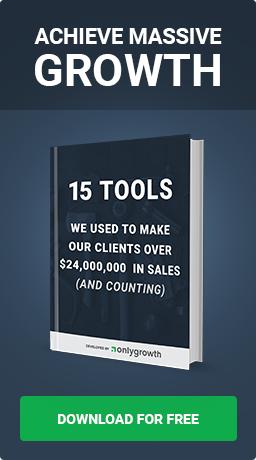5 Email Marketing Best Practices for Shopify Merchants
Sep 28th, 2016

Traffic leads to sales. Highly qualified traffic leads to even higher conversion rates. And there is no better way to drive qualified traffic to your Shopify site than through a simple, effective email marketing program.
This post is written by Dan Scudder, VP Business Development at Privy. Privy helps businesses more rapidly grow their email list. Privy is an Only Growth partner and has a free Shopify app.

As a Shopify merchant, you know the value of driving traffic to your website. Here are 5 best practices for Shopify merchants that want to succeed in email marketing:
1. Be active about email list growth
It’s easy to just rely on the default newsletter signup field as a way to grow your list. However, over 98% of web traffic has learned to ignore those email signup forms and they are often tucked away in the footer of a website. Instead, use more proactive list growth tools with popup and exit intent functionality (like our solution at Privy) to more rapidly grow your email list.
2. Setup email automation to save time
Now that you are adding new contacts to your list, you’ll want to setup an email automation sequence. Creating an upfront email sequence to send to new subscribers saves you time (since you don’t need to constantly create new campaigns) and creates a sales machine that works even while you sleep. Email providers such asMailChimp, Emma, and Klaviyo provide robust email automation capabilities for Shopify merchants.
3. Gain email insight to stay relevant
This is obvious, but extremely important. Learn about who is in your email list with tools like Full Contact and TowerData. What is the gender and age breakdown? What are their interests? Be smart about what you are sending - whether its coupons, content, and more.
4. All content should be “omnichannel”
Make sure that all content you push out to our email list is also pushed to your social media pages. Hootsuite and Buffer make social media scheduling super easy. You should be able to create one piece of content and syndicate it to multiple places - reaching your audience wherever they are.
5. Measure and do more of what is working
Conversion tracking tools such as Google Analytics and Improvely will make it easy to tell where your customers are coming from. If you are focusing on building an email program, you’ll want to measure the impact of your emails - which messages are driving visits and conversions? And how do you do more of what works?
Email marketing should always start simple. Try new things over time and measure what is working. As you grow your Shopify business, your email list will naturally grow and the opportunity to leverage your email database for repeat sales will continue to increase.



